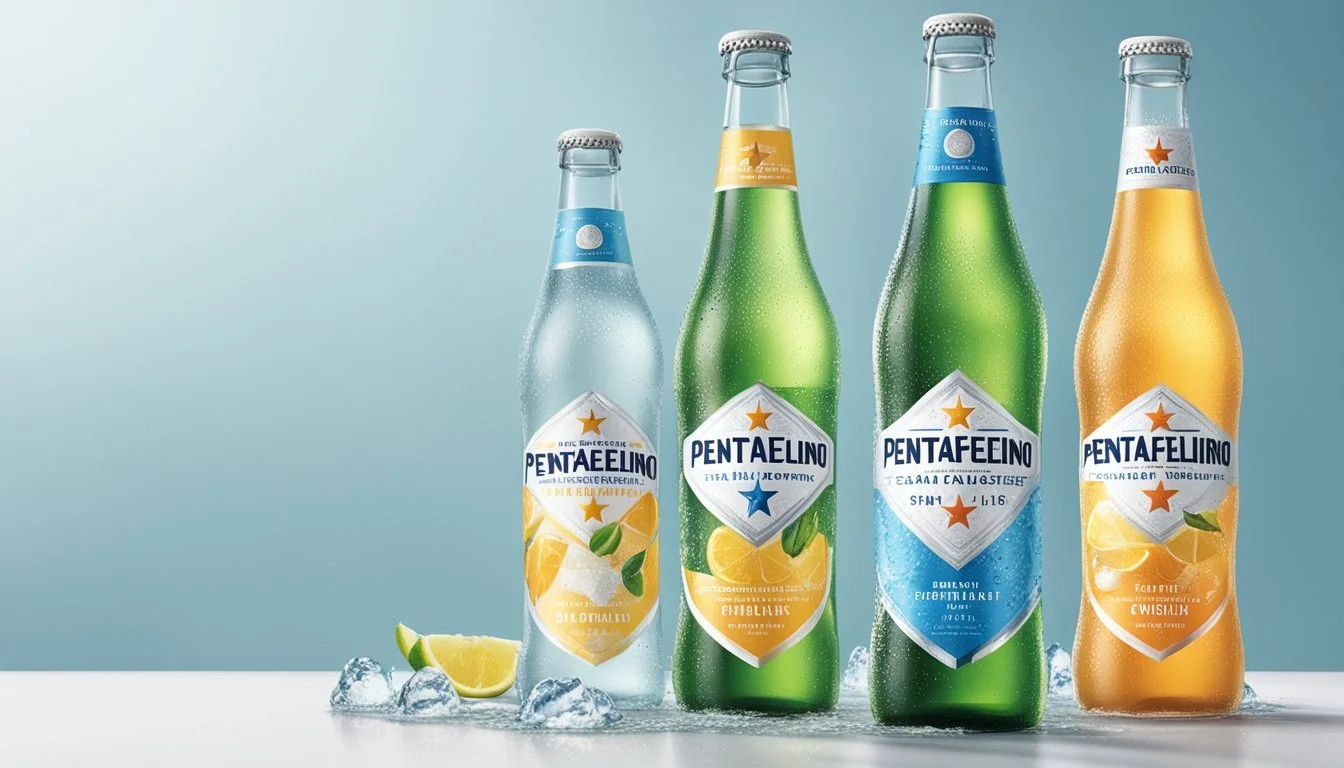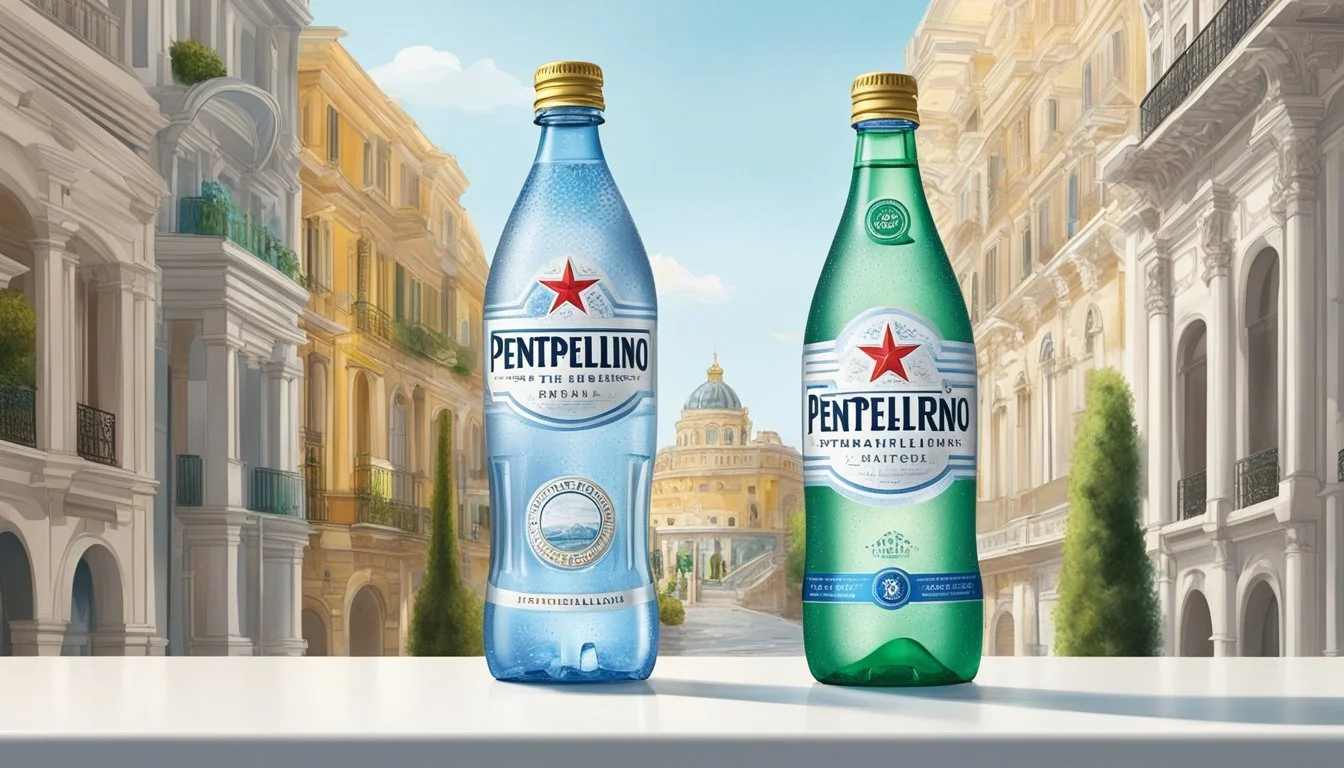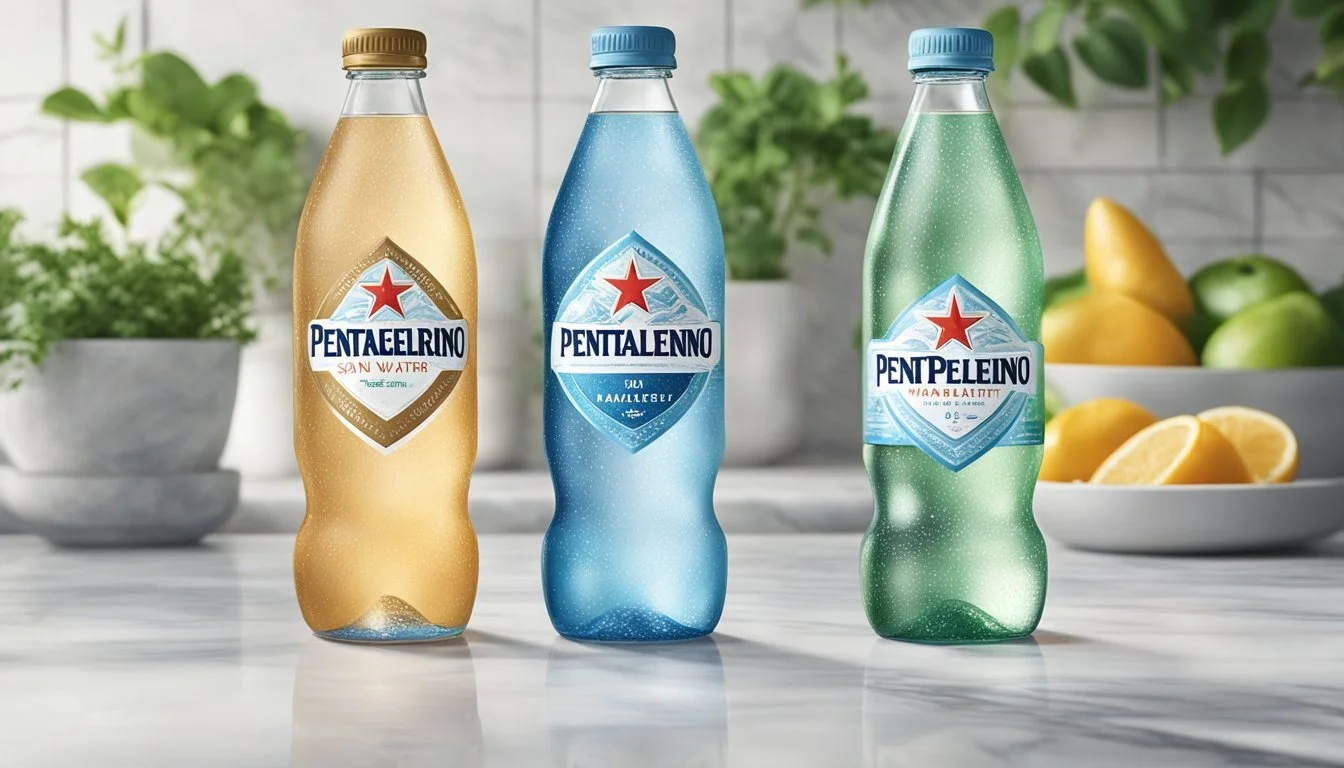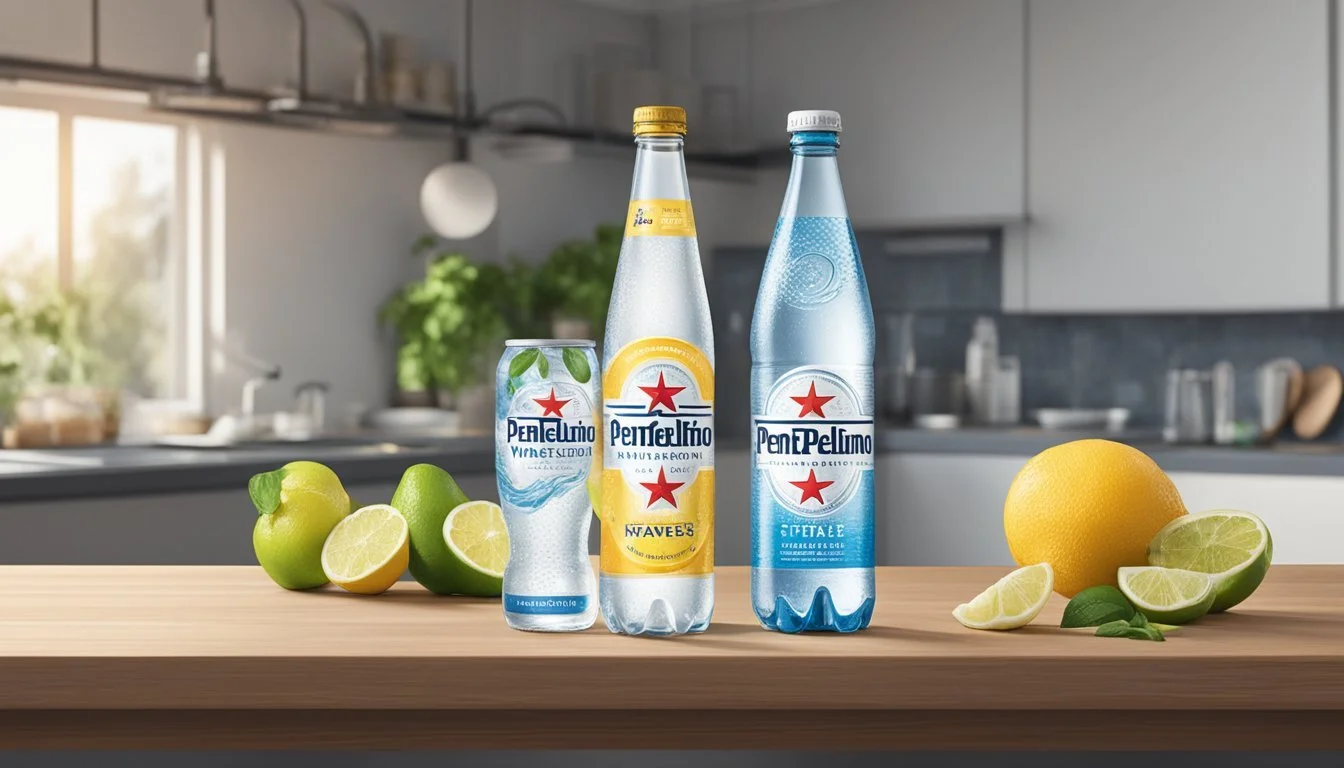Penta vs. San Pellegrino
A Clear Comparison of Bottled Waters
When it comes to bottled water, connoisseurs know that not all brands are created equal. Penta and San Pellegrino represent two distinct offerings in the world of hydration. Penta is known for its ultra-purified drinking water, boasting a patented 13-step purification process aimed at delivering a clean and pure product. Meanwhile, San Pellegrino, an Italian brand steeped in history, is synonymous with its naturally carbonated mineral water, sourced from the Lombardy region of Italy.
Consumers often debate the merits of these two brands, not just in terms of taste, but also based on the purported health benefits, sourcing, and overall drinking experience. Penta's positioning in the market relies on technological purification and a focus on hydration purity, while San Pellegrino offers a taste of tradition with its bubbly mineral-rich content. Each brand caters to a different set of preferences, whether it's the pursuit of the purest H2O or the enjoyment of a storied beverage with a natural effervescence.
The choice between Penta and San Pellegrino may come down to individual taste and the values that consumers assign to their drinking water. Some may give weight to the mineral content and unique taste of San Pellegrino, especially when paired with meals, while others may prefer the clean, stripped-back taste of Penta, with its commitment to purity. This article aims to assist in discerning which of these two bottled water brands might better suit one's personal hydration needs.
Overview of Bottled Water
Bottled water is a convenient and often preferred option for hydration, especially when access to tap water is limited or its quality is in question. Restaurants and other venues opt for bottled water for its perceived purity, taste, and often, mineral content. The spectrum of bottled water options ranges from purified tap water to naturally sourced mineral waters, each with its own profile of taste and mineral content.
A relentless pursuit for the best bottled water has led to a diverse market. Here's a snapshot of the landscape:
Purity: Some brands, like Penta, focus on the purity of their product, offering ultra-purified drinking water.
Mineral Content: Others, such as San Pellegrino, are celebrated for their naturally occurring minerals and carbonation.
Tap Water often serves as the baseline for comparison in terms of taste and quality. While tap water is typically safe to drink in many places, bottled water brands compete to offer a product that’s not just safe but enhanced.
Rankings and Ratings: Consumers and experts rank bottled waters from worst to best, evaluating factors like taste, mouthfeel, and the presence of additives or contaminants. This results in a spectrum where waters like Nestlé Pure Life are deemed "painfully average," while others achieve a status symbol appeal.
Differences in bottled water can also reflect in their presence on the market. Brands like San Pellegrino, which has been established since 1899, enjoy a long-standing reputation and visibility in premium dining experiences.
Historical Context
Bottled water has an intricate history that mirrors society's changing preferences and technological advancements. It is crucial to appreciate this context to differentiate between brands like Penta and San Pellegrino.
Evolution of Bottled Water
Bottled water began as a commodity for those seeking the purported health benefits of mineral waters from natural springs. In Europe, natural mineral waters were consumed for therapeutic reasons as early as the 16th century. Over time, advancements in bottling technologies allowed for the wider commercial distribution of water, transitioning from an elite curative product to a widely available consumer good.
As public water systems improved, bottled water shifted from a necessity to a luxury product. This pivot was marked by the emergence of mountain spring waters and purified waters that emphasized purity and taste. The concept of bottled water has since evolved to accommodate convenience, varying lifestyle demands, and a growing consciousness about water quality.
Rise of the Premium Water Brands
In the late 20th century, some brands began to distinguish themselves as premium options within the bottled water market. San Pellegrino, originating from a natural spring in Lombardy, Italy, gained recognition for its rich mineral content and presence of carbonation. Founded in 1899, it firmly established itself with international distribution in the early 1900s, becoming synonymous with fine dining and high-end hospitality.
Notable Minerals in San Pellegrino:
Calcium
Magnesium
Bicarbonate
Penta, on the other hand, does not originate from a natural mineral spring. It is an ultra-purified water subjected to a patented 13-step purification process. Penta positions itself differently, focusing on the purity aspect rather than the mineral content, aiming for a distinct segment of consumers seeking the cleanest water possible. This divergent approach reflects the varied niches within the premium bottled water market and highlights the breadth of choices available to consumers who have come to expect both quality and variety from their bottled water.
Comparing Penta and San Pellegrino
In the realm of bottled water, two notable brands stand out for their distinct characteristics and loyal followings: Penta and San Pellegrino. This section dissects their histories, production processes, and unique selling points to understand how they vie for superiority in a competitive market.
Brand History and Image
Penta water originates in California and has built a brand focused on ultra-purified drinking water. Since its inception, Penta has emphasized the science behind their hydration, catering to health-conscious consumers.
San Pellegrino, on the other hand, is synonymous with Italian luxury. Its sparkling mineral water, sourced from Lombardy, Italy, has graced dining tables since 1899, carving a niche as a stylish accompaniment to fine dining.
Source and Production Processes
Penta boasts a proprietary 13-step purification process applied to water sourced from Colorado. This involves filtering the water to remove impurities and then undergoing a process that includes UV light treatment and deoxygenation. The result is water that they claim is free from contaminants and demonstrates a noticeable purity in taste.
San Pellegrino's production process begins at a mineral-rich spring source in the Italian Alps. The water is naturally imbued with carbonation as it travels through volcanic rocks before being collected. It is then lightly enhanced with additional carbon dioxide from natural wells to maintain consistent effervescence.
Unique Selling Points
Penta's unique selling point is its commitment to purity. Its process yields a product with no additives, ideal for those who prioritize clean, pure hydration without any extraneous tastes or substances.
The allure of San Pellegrino lies in its balance of minerals and gentle carbonation, which provide a crisp taste sensation often preferred by those enjoying the sparkling water as a standalone beverage or as a sophisticated mixer in cocktails.
Each brand maintains a loyal customer base drawn to these specific attributes, confirming that when it comes to choosing between Penta and San Pellegrino, preference is as individual as one's palate.
Health and Hydration
Choosing the right bottled water can impact one's health and hydration needs. Penta and San Pellegrino offer distinct nutritional contents and benefits which are important for maintaining health and hydration levels.
Nutritional Content and Benefits
Penta water is ultra-purified and devoid of added minerals or electrolytes. Its purification process includes removing more impurities and dissolved substances compared to typical distilled water. On the other hand, San Pellegrino is a natural mineral water rich in minerals, most notably calcium, magnesium, and bicarbonate. The mineral content in San Pellegrino can contribute to daily nutritional intake:
Calcium: Beneficial for bone health.
Magnesium: Supports muscle and nerve function.
Bicarbonate: Aids in digestive health.
Due to its higher mineral content, San Pellegrino may offer additional health benefits, particularly for digestion and nutrient absorption as suggested by the snippet regarding its magnesium and sulfate content.
Hydration and Health Implications
Both Penta and San Pellegrino water types will hydrate the body effectively. However, the presence of minerals in San Pellegrino might enhance the body's hydration process by replenishing electrolytes lost through sweat and bodily functions. This can be particularly beneficial for individuals who engage in high levels of physical activity or those who live in hot climates.
In contrast, Penta water focuses purely on hydration without the additional electrolytes. For individuals requiring specific electrolyte management or those following strict dietary restrictions, Penta water might be more suitable.
It's important to note that drinking water, whether mineralized or purified, is critical for maintaining general health, supporting bodily functions, and preventing dehydration.
Water Quality and Purity
When considering bottled water options, it's crucial to assess their conformity to safety standards, the balance of pH levels and mineral content, and the potential for contamination. These factors determine the superiority of water quality and purity between brands like Penta and San Pellegrino.
Safety Standards and EPA Regulations
Penta water is subjected to rigorous purification processes to remove impurities and contaminants. It adheres to EPA regulations, which set limits on over 90 contaminants in drinking water. One of Penta's key methods is a multi-step filtration system that includes UV light treatment and deoxygenation, ensuring that its water meets federal quality standards.
San Pellegrino, sourced from natural springs, is also bound by EPA standards and is monitored for safety and quality. The natural occurrence of minerals in San Pellegrino might result in subtle variances when meeting these regulations, particularly as they relate to mineral content.
pH Levels and Mineral Content
The pH level of water indicates its acidity or alkalinity, which can influence flavor and potentially impact health. Penta boasts of ultra-purified water with a pH level typically around 7, representing neutral pH and suggesting its purity.
Penta: pH ~7
San Pellegrino: pH 7.7
San Pellegrino has a slightly higher pH level, around 7.7, which is still within the safe and neutral range. San Pellegrino is recognized for its significant mineral content, including calcium, magnesium, and bicarbonate, enriching the taste and offering potential health benefits. The mineral content for each brand is as follows:
Mineral Penta (mg/L) San Pellegrino (mg/L) Calcium Minimal 174 Magnesium Minimal 52 Bicarbonate Minimal 1368
Contamination Concerns
The potential presence of contaminants such as toxic PFAS chemicals is a critical concern in bottled water. Penta employs advanced filtration technology to ensure their water is free from contaminants, targeting even the most microscopic impurities.
San Pellegrino, sourced from protected groundwater reservoirs, naturally filters through limestone and volcanic rock, which acts as a barrier against contamination. Nonetheless, it is periodically tested to guard against potential pollutants and maintain a clean profile.
Both Penta and San Pellegrino diligently monitor for contaminants to protect consumers and maintain a standard of purity in their bottled water.
Consumer Preferences
When selecting bottled water, consumers often have specific preferences regarding taste and carbonation. These factors largely influence their choice between brands such as Penta and San Pellegrino.
Taste and Carbonation
Penta water is known for its purified taste. The brand uses a patented process that includes filtration and UV light treatment. This process removes more impurities compared to conventional methods, resulting in a clean taste that some consumers prefer. Penta water is not carbonated, which appeals to those who enjoy still water that retains a natural taste without the infusion of carbon dioxide (CO2).
In contrast, San Pellegrino is a sparkling water popular for its signature fizz and distinct taste. It is carbonated, meaning CO2 has been added to create bubbles, a characteristic feature relished by enthusiasts of carbonated water. San Pellegrino's sparkle comes from the naturally occurring carbonation that arises as the water flows from the spring. This gives it a unique taste profile that is favored by some consumers, particularly those who appreciate a slight mineral taste with their carbonation.
San Pellegrino water also contains minerals, which can affect the taste, making it slightly alkaline. Alkaline water refers to water with a higher pH level compared to regular drinking water. Some individuals seek out alkaline water for its claimed health benefits, although scientific consensus on these benefits is not definitive.
In the sphere of bottled waters, the choice between Penta and San Pellegrino often comes down to individual preference for either purified and still water or naturally carbonated and mineralized water.
Environmental Impact
When considering the environmental impact of bottled water, it is critical to examine both the bottling process, including the carbon footprint, and ongoing efforts in recycling and sustainability by these brands.
Bottling Process and Carbon Footprint
The bottling process of water has significant environmental repercussions. Studies have shown that producing bottled water is substantially more resource-intensive compared to tap water. For instance, it has been reported that the bottled water industry can have up to 3,500 times greater impact on ecosystems than tap water. While Penta and San Pellegrino differ in their production methods, both contribute to the carbon footprint due to the extraction and processing of raw materials, transportation, and manufacturing of the bottles. Nestlé, which owns brands like San Pellegrino, Deer Park, and Arrowhead, faces criticism for its extensive use of plastic and the carbon emissions associated with transporting its products globally. In contrast, brands like Icelandic Glacial emphasize their natural and sustainable bottling practices, though they still must manage the carbon footprint of international shipping.
Energy Usage: The production of plastic bottles involves significant energy consumption.
Water Usage: It often takes more water to produce the bottle than the bottle itself contains.
Transport: The emissions from transporting bottled water add to the product's carbon footprint.
Recycling and Sustainability Efforts
The recycling and sustainability initiatives taken by bottled water companies vary. San Pellegrino has been recognized for its recyclable plastic bottles, which helps to mitigate environmental impact. However, the overall recycling rate for PET bottles remains low, which means a significant amount of plastic ends up in landfills or the environment. Other companies, such as Pepsico, which offers LIFEWTR and Ethos Water, or Core Hydration, are also implementing measures to use recycled materials in their bottles and reduce overall plastic use.
Recycled Materials: Efforts to use post-consumer materials in bottles are on the rise.
Sustainable Practices: Some companies are investing in renewable energy and water-efficient practices.
It is essential for consumers to stay informed about these efforts and consider the implications of their choices when choosing bottled water.
Market and Industry Analysis
In the realm of bottled water, Penta and San Pellegrino represent quality segments appealing to health-conscious consumers and those who appreciate natural mineral waters, respectively. This section will unpack their market standing and consumer trends impacting their performance.
Competitors and Market Position
Penta, although not as widely known, positions itself as a premium hydration option with its ultra-purified water. San Pellegrino is an established brand positioned within the sparkling mineral water segment, with significant market presence and brand recognition. It competes with other carbonated stalwarts such as Perrier, which has a substantial portion of market share with nearly $300 million in sales. Other notable competitors in the flat water category include Dasani, Aquafina, and Poland Spring, which offer purified water options, while Evian and Acqua Panna cater to the premium natural mineral water market. Essentia, known for its ionized water, Eternal Water, and Zephyrhills play into the niche of naturally alkaline and spring waters, respectively. Each brand has carved out its position, promising quality, taste, and health benefits.
Perrier: Carbonated mineral water, significant sales
La Croix: Popular sparkling water, widely loved for flavors
Dasani & Aquafina: Mass-market, purified water
Evian: Premium natural mineral water
Poland Spring: Popular spring water in the U.S.
Acqua Panna: Italian still mineral water
Essentia: Alkaline ionized water
Eternal Water: Naturally alkaline spring water
Zephyrhills: Regional spring water brand in the U.S.
Trends and Consumer Behavior
The bottled water industry is shaped by a growing demand for healthier hydration options, with consumers increasingly aware of the health risks associated with contaminated tap water. Trends suggest a shift towards premium products, as exemplified by a predicted compound annual growth rate (CAGR) of 5.9% from 2023 to 2030 for the bottled water market as a whole. Brands like Penta, offering ultra-purified water, reflect this premiumization trend alongside others like Essentia and Acqua Panna. On the sparkling front, flavored options like La Croix dominate the consumer preference for variety and taste, while San Pellegrino maintains its position through its heritage and natural mineral content.
Consumer behavior is increasingly veering towards environmentally sustainable practices, which may influence brand choices. Bottled water companies face the challenge of meeting consumer expectations in sustainability while maintaining the quality and presentation of their products. This has led to innovations in packaging and sourcing, with some companies moving towards more eco-friendly packaging and emphasizing their environmental conservation efforts.
Conclusion
When comparing Penta water to San Pellegrino, one must consider various factors, such as the sourcing, mineral content, presentation, and alignment with fine dining experiences.
Penta water prides itself on its ultra-purified drinking water, free from additives and pollutants. It is marketed as an ideal choice for daily hydration, aligning with consumers' preferences for pure, clean water. Penta water's purification technique might appeal to those invested in their wellness routine or seeking the purest water form.
San Pellegrino, on the other hand, is synonymous with fine dining, offering a touch of sophistication with its natural carbonation and mineral-rich composition. This sparkling water is often the preferred choice in high-end restaurants and culinary settings due to its Italian origin and longstanding culinary prestige.
Table: Comparative Overview
Criteria Penta Water San Pellegrino Use Case Daily hydration Culinary experiences, fine dining Carbonation None Naturally carbonated Minerals Removed through purification Contains minerals contributing to taste and feel
Ultimately, for those seeking an unadulterated and purified drinking experience, Penta may be the preferred choice. However, for enthusiasts of effervescence and those seeking an elegant companion to their meals in a fine dining context, San Pellegrino stands out.
The choice between Penta and San Pellegrino hinges on personal preference and the occasion of consumption. Both brands hold merit, depending on the consumer's needs and circumstances surrounding their water consumption.
References
Penta Water is marketed as ultra-purified water that undergoes a patented 13-step purification process. This includes infusing the water with oxygen, a procedure they claim not only purifies but also energizes the water.
On the other hand, San Pellegrino is a sparkling mineral water sourced from the springs in the Italian Alps. It is naturally carbonated and enriched with mineral salts, which gives it a distinctive and slightly bitter taste.
For further details on each brand's characteristics:
Penta Water:
Official Penta Water Website
Food and Drug Administration (FDA) Water Beverage Regulations
San Pellegrino:
San Pellegrino's Official Website
Quality reports from the San Pellegrino source
Recent studies on microplastic contamination in bottled water brands could be relevant to the consumer's decision:
Microplastics and Bottled Water:
"Which Bottled Water Brands Are Safe? - Go New Mommy"
Studies published in scientific journals addressing microplastics in bottled water
Consumers often make choices based on environmental concerns and health impacts:
Environmental Impact:
Carbon footprint data of bottled water production
Reports on recycling and sustainability from environmental organizations
Health Impact:
Research on mineral water health benefits
FDA guidelines on drinking water
Each reference mentioned provides factual information on the respective water brands, their processing methods, health impacts, and environmental considerations.







